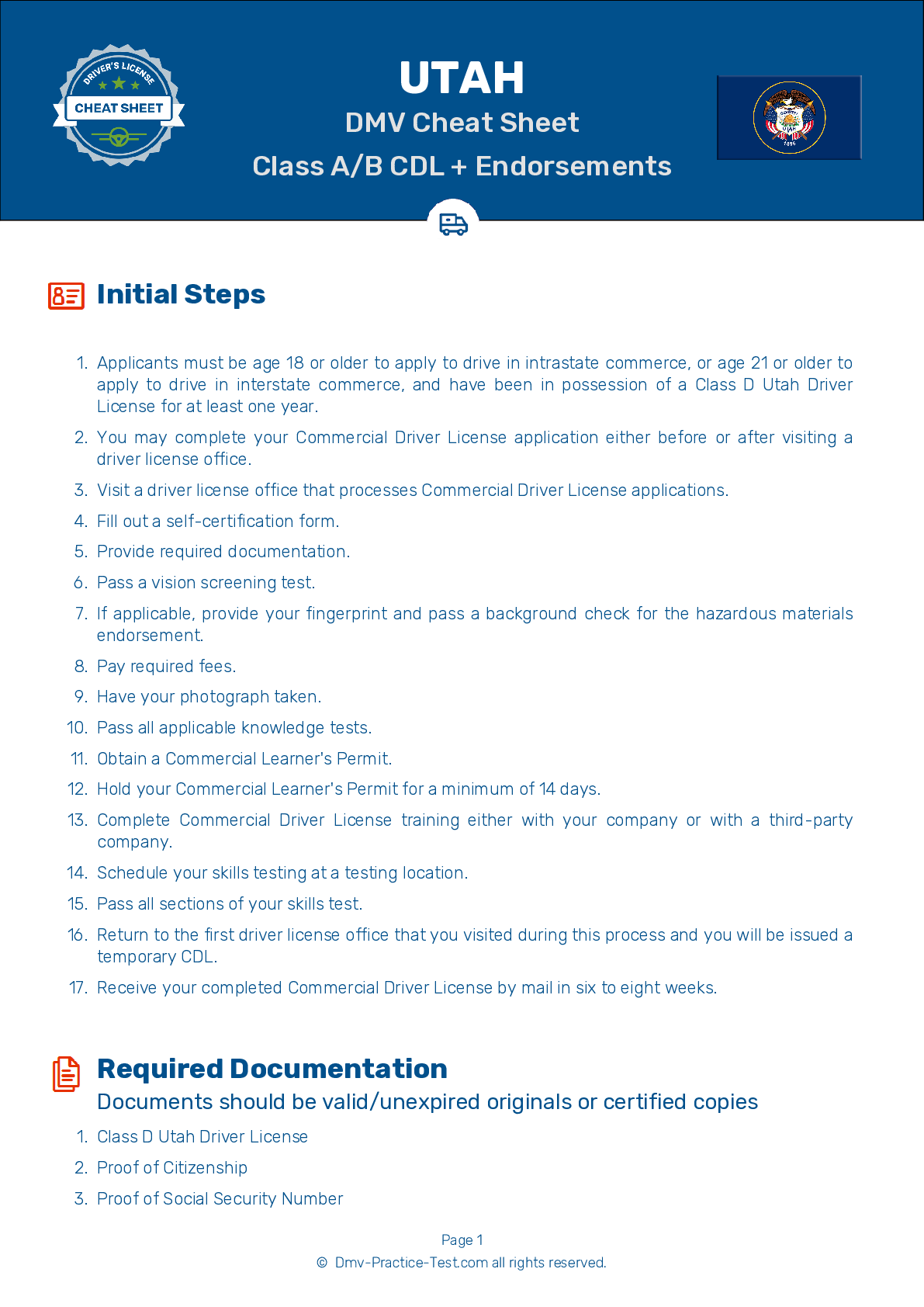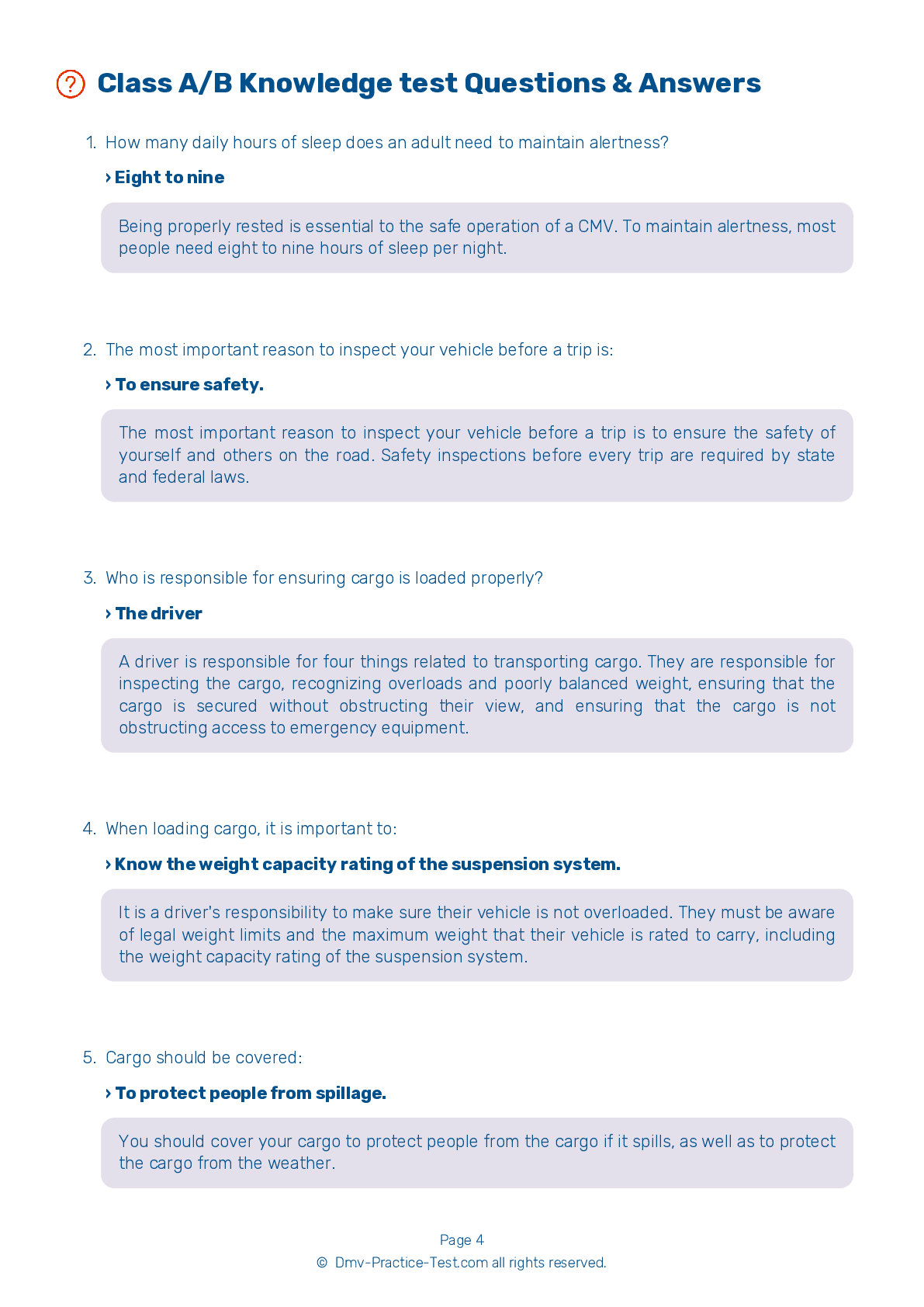Air Brakes Endorsement Test | Utah 2025 #2
Train for FREE online with our Utah CDL air brake test. The official exam test consists of several obligatory parts, with all of them checking your knowledge of different blocks of road rules. If you need to obtain a UT Class A/Class B driver license in 2025, practice as much as possible. Free sample tests published on our website will help you check and improve your knowledge and boost your grades. Please bear in mind that the requirements for CDL may vary from state to state.
1 . The brake pedal is part of which braking system?
The service brake system applies and releases the brakes when a driver presses the brake pedal while driving normally.
2 . If using spring brakes when hauling a heavy load, a complete stop will:
Spring brakes do not work on all axles. If your vehicle's spring brakes activate due to low pressure in an air brake system, your vehicle will need a longer distance to stop than usual, especially if you are carrying a heavy load.
3 . Why do you need to drain air tanks regularly?
Compressed air in an air brake system usually contains a certain amount of water and compressor oil. The water and oil can damage the brakes if left to accumulate in the system. Tanks must be drained regularly to remove this build-up.
4 . Air tank drains:
Compressed air in an air brake system usually contains a certain amount of water and compressor oil. The water and oil can damage the brakes if left to accumulate in the system. Manually operated air tank drains must be opened daily to remove this build-up.
5 . How is water and compressor oil removed from the bottom of an air storage tank?
Water and compressor oil are removed from air storage tanks through a drain valve. The water and oil can damage the brakes if left to accumulate in the system. Manually operated tanks must be drained every day to remove this build-up.
6 . On a truck with air brakes, the braking system’s air compressor:
In an air brake system, the air compressor pumps air into the air storage tanks. The air compressor is controlled by the air compressor governor.
See the exact questions that will be on the 2025 Utah DMV exam.
99.2% of people who use the cheat sheet pass the FIRST TIME
Lillian MCcranie explains how our CDL study guide was helpful in passing the exam and recommends it to everyone.
Cameron tells us how he purchased the CDL exam, and found it to be a useful tool which helped him pass the exam and find a job.



